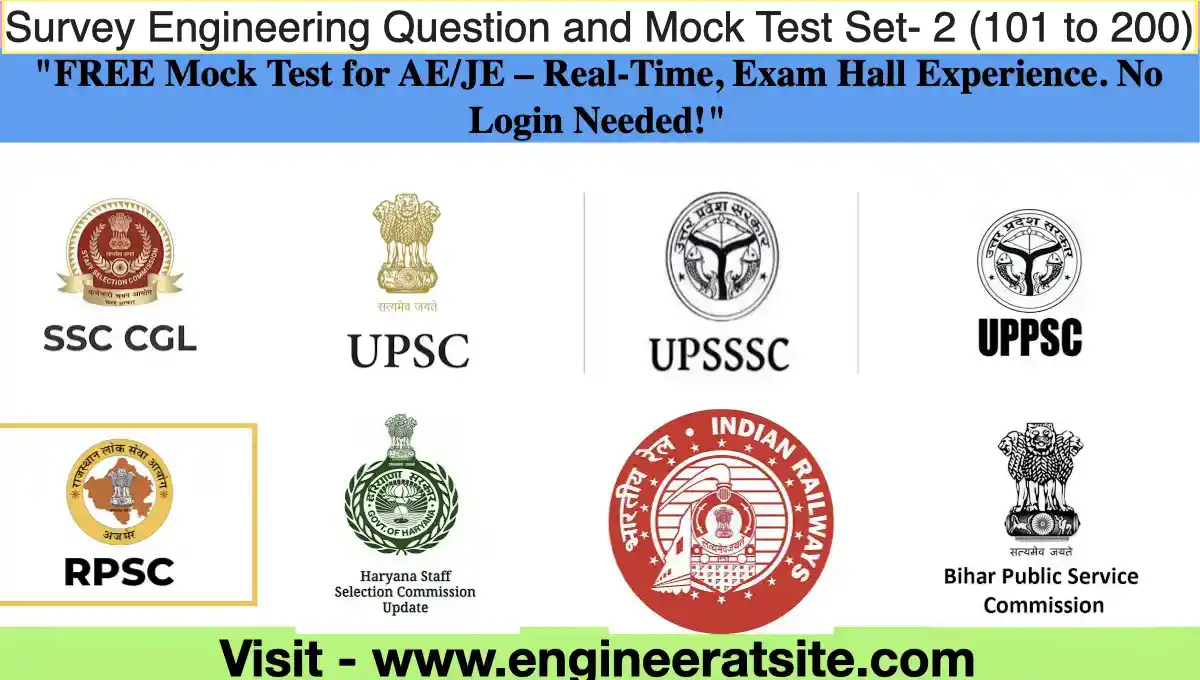| For more Job Updates | Click here |
| Follow us on LinkedIn | Click here |
| Follow us on Facebook | Click here |
| Follow us on Twitter | Click here |
| Join on WhatsApp | Click here |
Ace the Fundamentals of Engineering Exam with Smart Preparation
Are you ready to take the first step toward becoming a licensed Professional Engineer (PE)? The Fundamentals of Engineering Exam (FE) is your gateway to earning the Engineer-in-Training (EIT) title and advancing your engineering career. This computer-based test, administered by the National Council of Examiners for Engineering and Surveying (NCEES), assesses core engineering knowledge and is designed for recent graduates or students nearing the end of an accredited engineering degree program. With the right Fundamentals of Engineering Exam prep, you can approach this 110-question, 6-hour exam with confidence. Let’s dive into how to prepare effectively and set yourself up for success!
Why the FE Exam Matters
The Fundamentals of Engineering Exam is the first milestone on the path to PE licensure, testing your grasp of essential engineering principles across disciplines like Civil, Mechanical, Electrical, and more. Passing grants you the EIT designation, a critical credential that signals your technical competence to employers and opens doors to advanced roles. Taking the exam during your senior year or shortly after graduation—when concepts like calculus, statics, and thermodynamics are fresh—gives you a significant edge.
Top Strategies for Fundamentals of Engineering Exam Prep
Effective preparation is key to conquering the FE Exam. Here are proven strategies to help you succeed:
- Understand the Exam Structure: The FE Exam includes 110 multiple-choice questions, split into a breadth section (general engineering topics) and a depth section (discipline-specific). Familiarize yourself with the NCEES FE Reference Handbook, the only resource allowed during the exam, available for free at ncees.org after registering an account. Practice navigating it to quickly locate equations and data.
- Create a Study Plan: Develop a structured schedule, ideally 2–3 months long, focusing on key topics like mathematics, fluid mechanics, ethics, and engineering economics. Dedicate time to weaker areas while reinforcing strengths. Aim to study 10–15 hours per week, using a mix of review and practice problems.
- Use Practice Exams: Simulate exam conditions with NCEES practice exams or resources like PrepFE, which offer problems mirroring the actual test’s format and difficulty. Timed practice builds speed and familiarity with question types.
- Leverage Quality Resources: Invest in study materials like the FE Review Manual by Michael R. Lindeburg or online courses from platforms like School of PE, known for high pass rates (93% for FE Civil). These resources provide comprehensive reviews and detailed solutions.
- Master Your Calculator: Use an NCEES-approved calculator (e.g., TI-36X Pro) and learn its functions thoroughly, as it’s your key tool for efficient problem-solving during the exam.
Tips for Exam Day Success
- Register Early: Schedule your exam at a Pearson VUE test center during one of the four testing windows (Jan–Mar, Apr–Jun, Jul–Sep, Oct–Dec). The exam fee is $175, and some states require additional application fees.
- Prepare Logistically: Arrive early with valid ID. You’ll receive a copy of the NCEES FE Reference Handbook at the test center; personal copies are not allowed.
- Stay Focused: The 6-hour exam includes a break. Pace yourself, tackle easier questions first, and use the handbook efficiently to avoid getting stuck.
Why Start Your FE Prep Now?
The Fundamentals of Engineering Exam is a rigorous test, but with dedicated Fundamentals of Engineering Exam prep, you can pass on your first try. Passing early positions you as a competitive candidate for engineering roles, especially in firms that value EIT certification. Don’t wait—your knowledge is freshest now, and every step toward licensure boosts your career potential.
Ready to get started? Register at ncees.org, download the FE Reference Handbook, and build your study plan today. Your future as a Professional Engineer awaits!
